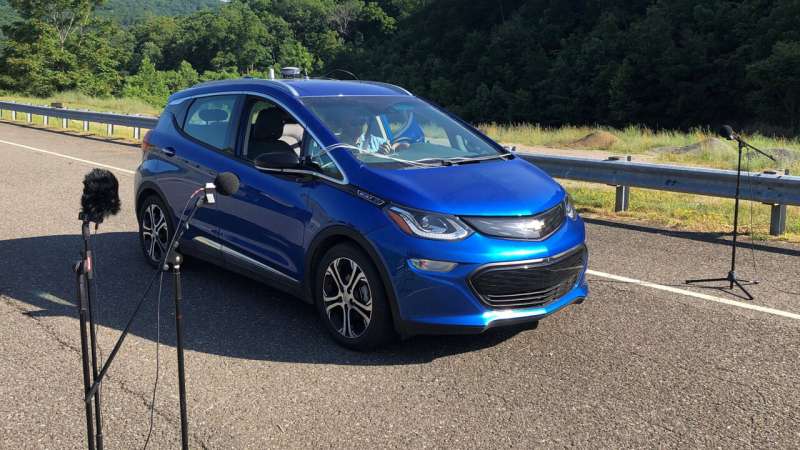
While they decrease sound pollution, electric vehicles are so quiet, they can create a safety concern, particularly to the visually impaired. To address this, many governments have mandated artificial sounds be added to electric vehicles.
In the United States, regulations require vehicle sounds to be detectable at certain distances for various vehicle speeds, with faster speeds corresponding to larger detection distances. Michael Roan, from Penn State University, and Luke Neurauter, from the Virginia Tech Transportation Institute, and their team tested how well people detect electric vehicle sounds in terms of these requirements.
Roan will discuss their methods and results in the talk, “Electric Vehicle Additive Sounds: Detection results from an outdoor test for sixteen participants,” on Tuesday, Nov. 30, at the Hyatt Regency Seattle. The presentation is part of the 181st Meeting of the Acoustical Society of America, taking place Nov. 29-Dec. 3.
Participants in the study were seated adjacent to a lane of the Virginia Tech Transportation Institute’s Smart Road facility and pressed a button upon hearing an approaching electric vehicle. This allowed the researchers to measure the probability of detection versus distance from the vehicle, a new criterion for evaluating safety compared to the mean detection distance.
“All of the cases had mean detection ranges that exceeded the National Highway Transportation Safety Administration minimum detection distances. However, there were cases where probability of detection, even at close ranges, never reached 100%,” said Roan. “While the additive sounds greatly improve detection distances over the no sound condition, there are cases where pedestrians still missed detections.”
Even after adding sound, electric vehicles are typically quieter than standard internal combustion engine vehicles. In urban environments, they would create less sound pollution.
Roan said further studies need to be done to investigate detection when all vehicles at an intersection are electric. Additive sounds could create a complex interference pattern that may result in some loud locations and other locations with very little sound.
acousticalsociety.org/asa-meetings/
Citation:
Adding sound to electric vehicles improves pedestrian safety (2021, November 30)
retrieved 30 November 2021
from https://techxplore.com/news/2021-11-adding-electric-vehicles-pedestrian-safety.html
This document is subject to copyright. Apart from any fair dealing for the purpose of private study or research, no
part may be reproduced without the written permission. The content is provided for information purposes only.
Stay connected with us on social media platform for instant update click here to join our Twitter, & Facebook
We are now on Telegram. Click here to join our channel (@TechiUpdate) and stay updated with the latest Technology headlines.
For all the latest Technology News Click Here
For the latest news and updates, follow us on Google News.
